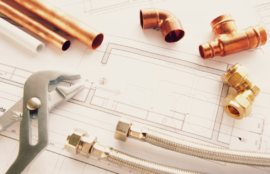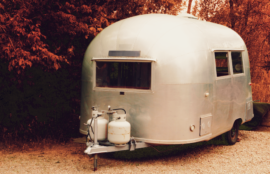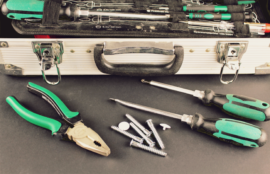When you’re out camping in your RV, your awning is a versatile companion that offers a welcome respite from the sun’s scorching rays or an unexpected downpour. Regardless of the season, your awning can significantly enhance your outdoor experience. However, like any part of your RV, your awning requires regular inspection and maintenance to ensure it remains in top condition. At Queen Bee RV Inspections, we’ve seen our fair share of stained, mildewed, worn, and torn awnings, some of which were beyond repair. To help you avoid such unfortunate situations, we’re here to share our expertise on inspecting and maintaining your RV awning.
1. Regular Cleaning
The first step to extend the life of your awning is proper cleaning. We recommend giving your awning a thorough wash once or twice a year, using a cleaning product recommended in your owner’s manual specifically designed for awning use. These products are designed to remove dirt, grime, and even mildew, keeping your awning fresh and free from unsightly stains. After cleaning, make sure to allow sufficient time for the awning to dry completely before storing it.
If you have to retract your awning after a rain or snow, ensure it’s dry before doing so. If it’s not dry and you roll it up, you risk trapping moisture, which can lead to mold and mildew growth, not to mention the unpleasant odor. For wet awnings, it’s essential to extend them again upon arrival at your destination to complete the drying process, which may take 24 to 72 hours. A retracted awning can take weeks to dry if it’s still damp when you store it.
2. Regular Inspections
Inspecting your awning regularly is key to identifying any potential issues before they become major problems. Check the awning fabric for stains, tears, loose threads, pinholes, or signs of excessive wear. To ensure even rolling, observe the awning as it extends and retracts.
For a more detailed inspection, take a close look at the fabric from both a rooftop view and ground level, or use a ladder for a better vantage point. Small holes can often be repaired with a vinyl patch kit, while tears or deterioration may benefit from awning tape, which is readily available on camping store websites or through online retailers like Amazon. These simple measures can extend the lifespan of your awning, saving you the cost and hassle of an immediate replacement.
3. Traveling Precautions
When you’re on the road with your RV, there are a few precautions to take to avoid damaging your awning. Before departure, ensure that the awning locking device is securely engaged. This prevents the awning from unfurling during transit, potentially causing tears or damage.
4. Weather Awareness
Keep a close eye on the weather forecast, particularly when it comes to your awning. If your awning gets wet during a rain shower, you can lower one side of it to allow the rainwater to drain off. This simple step prevents pooling, which can lead to damage to the fabric and mechanical components.
Heavy winds and unexpected gusts are your awning’s nemesis. They can wreak havoc, even tearing the entire awning off the side of your RV. To avoid such a catastrophe, be diligent about retracting your awning in windy conditions. Always remember that prevention is better than cure, and a little extra caution can go a long way in protecting your valuable RV accessory.
In closing, your RV awning is a valuable addition that enhances your outdoor camping experience. To ensure it continues to provide shelter and comfort, proper inspection and maintenance are essential. Queen Bee RV Inspections is here to help you keep your awning in pristine condition, extending its lifespan and maintaining its fresh appearance. By following these simple guidelines, you can prevent the hassle and cost of dealing with a damaged or deteriorated awning and enjoy your camping adventures to the fullest.





